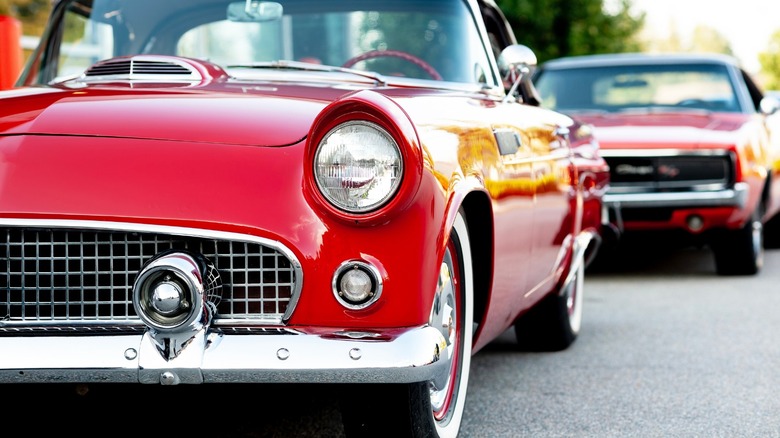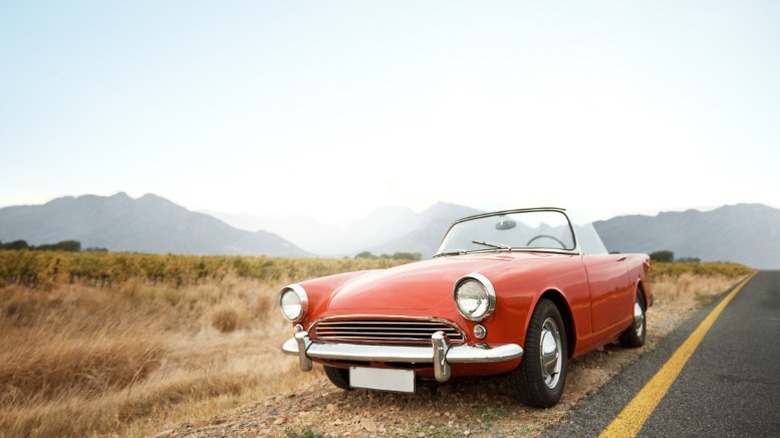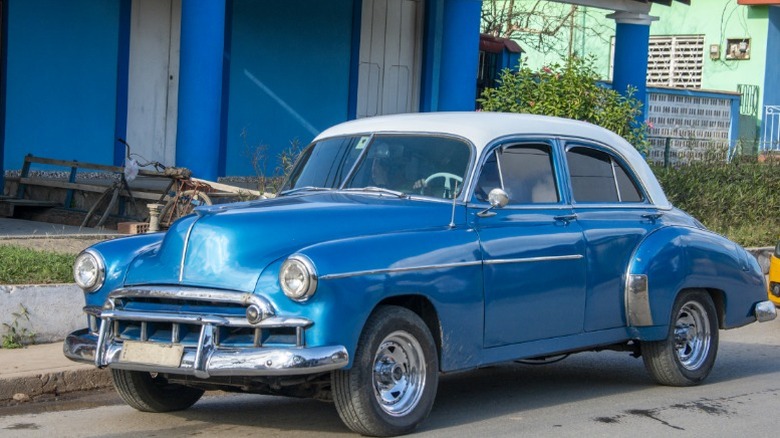What Qualifies A Car For Classic Car Insurance?
Vintage and classic cars are appealing for many reasons. Not only can they be far easier to work on than many modern vehicles, but they're also excellent for learning the basics about how cars work and getting into DIY auto repair. Of course, vintage vehicles are also extremely fun to drive. Finally, others may be fans of older vehicles due to fewer restrictions on emissions and less complex tech. However, while classic cars are excluded from many modern automotive regulations, you still have to insure a vintage vehicle if you plan to drive it on public roads.
Not only is car insurance a legal requirement in nearly every U.S. state, but it's also a critical way to protect your vehicle from accidents and damage. Classic cars can be extremely pricey, especially if they're a rare model or meticulously restored, and having auto coverage is one of the best ways to protect that investment. Fortunately, classic car insurance is usually cheaper than regular coverage.
However, there are some requirements that a vehicle must meet in order to qualify for classic car insurance, and, contrary to what you may believe, that includes more than just the car's age. In reality, not all old vehicles qualify for classic car coverage. Some of the things that insurance providers look at when determining a vehicle's eligibility for this type of coverage includes its age, how many miles you drive the vehicle annually, and its condition. If you're interested in learning more about what qualifies a car for classic car insurance, hang tight. Here's everything you need to know.
Cars must meet a few requirements to qualify for classic car insurance
Advanced age isn't the only thing that makes a car classic. When insurers are deciding whether to provide coverage for a vintage vehicle, they take several factors into consideration. Age is, of course, one of those factors. Generally, a car must be at least 25 years old to qualify for classic car insurance. You also cannot use your vintage vehicle as your primary source of transportation if you want to insure it with a classic car policy.
Companies require that drivers have a secondary source of transportation, whether it be another car or access to a friend or family member willing to drive you wherever you need to go. Furthermore, insurance companies also set mileage limitations on classic car policies. Depending on your plan, you may be limited to driving no more than a few thousand miles per year in your vintage vehicle, meaning you can't use your classic car as your daily driver.
Not only must you adhere to mileage limitations and refrain from using your classic car as your daily driver, though. Your vintage vehicle must also be in healthy condition, and you must show proof of regular maintenance to be eligible for classic car insurance. Depending on the insurance company, you may also have to store your classic car in a safe indoor environment. If you're an antique vehicle owner and plan to insure your car, you should check a few different agencies to compare plans, requirements, and prices. Doing so can not only help you get the best plan for your investment, but it can also help get you the best price for your budget.
What's the difference between classic and regular car insurance?
We've already mentioned that classic car insurance comes with several requirements that don't apply to standard policies. We've also touched on the fact that vintage vehicle coverage typically costs less than regular plans. However, what about the other differences between the two forms of protection, and what exactly does classic car insurance cover in the first place?
Classic car insurance actually works pretty similarly to regular coverage. You can choose between collision, comprehensive, and liability plans, and you can also choose to add various riders and add-on coverage policies. The primary differences between antique car insurance and standard plans come in the form of those stringent requirements discussed above. Another difference comes in the form of how the insurance company decides to set your premium or payments. Vintage vehicles tend to rise in price over time, while newer cars lose their value the more miles you put on them. Because of this, insurers calculate payment plans based on the estimated value of the vehicle. In comparison, standard car insurance policies don't assign value until after a claim is made.
The other major difference between these two types of coverage is the price. Because you won't be driving your vintage car every day, exposing it to accidents and damage, you can expect classic car insurance policies to cost around 30% less than a regular auto insurance plan. As you can see, classic car insurance is definitely worth it. It's most likely a legal requirement where you live. But more than that, it's a great way to protect your investment, and it comes at a fraction of the cost of standard policies.


